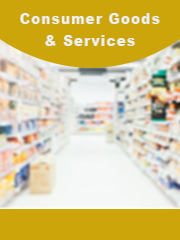TOP CATEGORY: Chemicals & Materials | Life Sciences | Banking & Finance | ICT Media

Download Report PDF Instantly
Report overview
The global Food Grade Metal Can market was valued at USD 28.24 billion in 2023 and is projected to reach USD 33.46 billion by 2030, growing at a Compound Annual Growth Rate (CAGR) of 2.2% during the forecast period (2024-2030). The influence of COVID-19 and the Russia-Ukraine War were considered while estimating market sizes.
The U.S. Market is Estimated at $ Million in 2023, While China is Forecast to Reach $ Million.
One Piece Segment to Reach $ Million by 2030, with a % CAGR in next six years.
The global key manufacturers of Food Grade Metal Can include RLM Packaging, Sonoco, Crown, Silgan, Trivium, envases, CPMC HOLDINGS LIMITED, Massilly and Ball Corporation, etc. in 2023, the global top five players have a share approximately % in terms of revenue.
This report aims to provide a comprehensive presentation of the global market for Food Grade Metal Can, with both quantitative and qualitative analysis, to help readers develop business/growth strategies, assess the market competitive situation, analyze their position in the current marketplace, and make informed business decisions regarding Food Grade Metal Can. This report contains market size and forecasts of Food Grade Metal Can in global, including the following market information:
The market for food-grade metal cans is a dynamic and crucial segment of the food packaging industry. These cans are designed to meet stringent standards to ensure food safety and quality, and they cater to a diverse range of end-users.
Food grade metal cans are ubiquitous in the food packaging industry. Their primary purpose is to preserve the freshness, flavor, and nutritional value of food products while ensuring safety and convenience for consumers.
Food grade metal cans are typically made from tin-plated steel or aluminum. These materials are chosen for their excellent barrier properties, durability, and recyclability.
Food grade metal cans are used across a wide range of food products, including:
The use of metal cans has a notable positive impact on the environment due to their recyclability. Recycling aluminum saves up to 95% of the energy required to produce new aluminum from raw materials. Similarly, recycling steel reduces energy use and conserves natural resources. The widespread recycling programs for metal cans contribute significantly to reducing waste in landfills.
Ensuring the safety of food grade metal cans involves several critical steps:
Food grade metal cans are an essential component of the food packaging industry, offering unmatched benefits in terms of preservation, durability, and safety. Their recyclability further enhances their appeal as an environmentally responsible choice.
We surveyed the Food Grade Metal Can manufacturers, suppliers, distributors and industry experts on this industry, involving the sales, revenue, demand, price change, product type, recent development and plan, industry trends, drivers, challenges, obstacles, and potential risks.
Total Market by Segment:
Global Food Grade Metal Can Market, by Type, 2019-2024, 2025-2030 ($ Millions) & (K Units)
Global Food Grade Metal Can Market Segment Percentages, by Type, 2023 (%)
Outline of Major Chapters:
Chapter 1: Introduces the definition of Food Grade Metal Can, market overview.
Chapter 2: Global Food Grade Metal Can market size in revenue and volume.
Chapter 3: Detailed analysis of Food Grade Metal Can manufacturers competitive landscape, price, sales and revenue market share, latest development plan, merger, and acquisition information, etc.
Chapter 4: Provides the analysis of various market segments by type, covering the market size and development potential of each market segment, to help readers find the blue ocean market in different market segments.
Chapter 5: Provides the analysis of various market segments by application, covering the market size and development potential of each market segment, to help readers find the blue ocean market in different downstream markets.
Chapter 6: Sales of Food Grade Metal Can in regional level and country level. It provides a quantitative analysis of the market size and development potential of each region and its main countries and introduces the market development, future development prospects, market space of each country in the world.
Chapter 7: Provides profiles of key players, introducing the basic situation of the main companies in the market in detail, including product sales, revenue, price, gross margin, product introduction, recent development, etc.
Chapter 8: Global Food Grade Metal Can capacity by region & country.
Chapter 9: Introduces the market dynamics, latest developments of the market, the driving factors and restrictive factors of the market, the challenges and risks faced by manufacturers in the industry, and the analysis of relevant policies in the industry.
Chapter 10: Analysis of industrial chain, including the upstream and downstream of the industry.
Chapter 11: The main points and conclusions of the report.